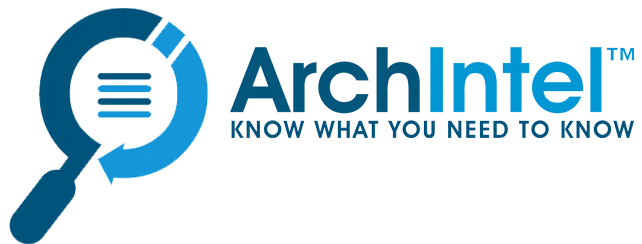Adam Harrison, vice president of Strategy and Corporate Development with PAE, recently spoke with ArchIntel regarding the lessons, challenges and responsibilities of working within the field of competitive intelligence (CI), as well as how to develop an effective strategy and workforce to continue business and market success.
“Within the field of competitive intelligence, you make assumptions about your competitors that you often disprove once you dig into the data. That’s why it’s important for people involved in CI to be agile, ready to pivot and able to quickly adapt to change. You are often surprised by what you find through your research and analysis in this role.”
ArchIntel: What are your key takeaways from working within the competitive intelligence sector?
“You must be willing and able to adapt. There is constant change in the market, on both supply and demand sides. On the supply side, we’ve seen a lot of consolidation in the industry, which impacts the way competitive intelligence is gathered and analyzed.
For example, with some of the recent mergers & acquisitions, it’s essential to stay informed to know how those deals may potentially impact companies’ go-to-market strategy and how they’ll compete in the market moving forward.
On the demand side, the federal government has increased their focus on procuring services and products from contractors in a more efficient and flexible manor. It is equally as important to monitor demand-side initiatives as it is to understand you competitors because your customer’s needs are always changing as well.”
ArchIntel: What are some of the common challenges that people face with GovCon competitive intelligence?
“The breadth of information available can be the biggest challenge within competitive intelligence. There is an extraordinary amount of data that people involved in CI can gather and analyze, but it’s critical to have the ability to cull through it to find the most important takeaways.
This can be particularly challenging in the federal government market due to the amount of data available in the open source world. The government is continuing to be as transparent as possible and the amount of available information will grow exponentially. This makes it easy to drown in the data and lose sight of the real goal, which is to make strategic, actionable decisions.
Always ask: Why are you doing this? What are the outcomes that you’re trying to achieve? Those questions will enable you to stay on course and make sure you are getting to the end product you need.”
ArchIntel: How have you leveraged competitive intelligence during your career and what are some of the key CI advancements you’ve seen in recent years?
“Competitive intelligence means different things to different people in the industry. As a former strategy consultant, I provided my clients an outside, independent perspective on upcoming opportunities in the market and helped them think about the competition’s potential go-to-market strategy for that given market area.
At PAE, I spearhead my company’s strategic planning process which includes elements of competitive intelligence. Having this competitive intelligence foundation has greatly helped on several of our company’s key strategic initiatives.
Through studying other companies as part of my work in CI, I have learned to think outside of the box and build strategic frameworks for my internal and external stakeholders. These skills have been instrumental in communicating our market and competitive positioning.
In terms of new CI advancements, the changes to CRM tools have greatly expanded our ability to capture open-source information and important data points. CRM applications are much more user-friendly and have very strong interoperability with the databases and resources GovCon CI teams use on a regular basis.
As these technologies continue to improve, it’s going to be imperative for the BD and CI teams to continue to incorporate the new functionality in these tools in order to stay competitive. Processes will need to be put in place to ensue all relevant information is up to date and correct in a CRM system. Performing CI-related trend analysis is easier than before given these advancements, but if the data in the system is not 100% accurate these analyses lose their utility.”
ArchIntel: How do you create an effective competitive intelligence strategy?
“In terms of a corporate strategy, it’s not only important for companies to understand how they are going to differentiate themselves in the market but how they plan to grow and adapt. All strategies have a shelf life. A company can’t solely focus on implementing one new technology with a customer or being known as the lowest cost provider. Your strategy needs to be malleable to the constantly changing landscape.
It’s important for companies to understand that their strategy must have flexibility built into it as they will need to pivot during uncertain times in the market. The government contracting sector is a dynamic market. This ever-changing environment only solidifies the importance of communicating effectively to all key stakeholders.”
ArchIntel: What are the standards you use to measure success within competitive intelligence?
“Measures of success vary depending on the organization you are supporting. Key Performance Indicators (KPIs) are a helpful metric when assessing your competitive intelligence program. The KPIs can change depending on the maturity of your company.
For example, as a new company building a CI program, the focus should be on putting standards and processes in place that can be followed as the company continues to grow and the program expands. Once an organization has mastered a CI system, the next step is adding more sophisticated KPIs in addition to just tracking wins, losses, submitted bids, etc.
At the end of the day, the most important key performance indicators are typically tied to your financial plan (e.g., revenue, profit). You have to make sure that your CI program translates into near and long-term financial growth for your company.”

